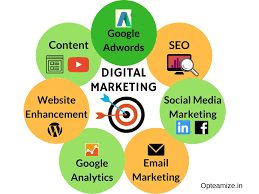The Mexico lighting market size has been experiencing significant growth due to advancements in technology, urbanization, and government policies aimed at energy efficiency. In 2023, the market reached a value of approximately USD 2.91 billion and is projected to grow at a robust CAGR of 7.6% between 2024 and 2032, reaching an estimated value of USD 5.66 billion by 2032. This rapid growth is fueled by the increasing demand for sustainable and smart lighting solutions across various sectors, including residential, commercial, public, and industrial applications.
This blog explores the key segments, trends, and factors shaping the Mexico lighting market, offering insights into its future potential.
Market Segmentation
By Type
The market is segmented into several lighting types, each catering to specific needs and applications:
- LED Lighting:
LEDs dominate the market due to their energy efficiency, longer lifespan, and declining costs. They are increasingly used in both residential and commercial settings. - Fluorescent Lighting:
Despite a gradual decline in popularity, fluorescent lights still find applications in offices and public buildings due to their affordability. - Incandescent Lighting:
The demand for incandescent lights is diminishing due to low energy efficiency and government restrictions promoting sustainable alternatives. - Halogen Lighting:
Used in specific applications like automotive and retail lighting, halogen lights provide bright and natural illumination but are less energy-efficient than LEDs.
By Product
The product segmentation highlights the diverse use cases for lighting solutions:
- Bulbs:
Widely used in residential and commercial spaces, bulbs remain a staple product in the market. - Streetlights:
Integral to urban infrastructure, streetlights are increasingly being replaced with energy-efficient LED variants. - Downlights and Tube Lights:
Popular in homes and offices, these products offer versatile and efficient lighting solutions. - Flood Lights:
Essential for public spaces, stadiums, and industrial settings, floodlights are growing in demand due to urban expansion. - Emergency Lights:
With rising safety concerns, emergency lighting is becoming a priority in residential and commercial buildings. - Others:
Specialty lighting products, such as decorative and architectural lights, cater to niche demands.
By Application
- Residential:
The adoption of smart and decorative lighting is increasing, driven by consumer preferences for aesthetics and energy efficiency. - Commercial:
Offices, retail outlets, and hospitality spaces require dynamic lighting solutions tailored to their specific needs. - Public:
Smart city initiatives are driving the demand for efficient public lighting, including streetlights and outdoor illumination. - Industrial:
High-intensity lighting solutions are crucial for factories, warehouses, and production units.
By Distribution Channel
The market also considers the mode of product distribution:
- Online Platforms: Gaining popularity for convenience and variety.
- Offline Channels: Still dominate due to hands-on product evaluation and immediate purchase.
Regional Analysis
The demand for lighting varies across regions in Mexico, influenced by urbanization, industrial growth, and local government policies. Major cities like Mexico City and Guadalajara are adopting smart lighting systems, while rural areas are gradually transitioning to solar-powered and LED lighting solutions.
Market Dynamics
Drivers
- Urbanization and Smart City Projects:
Increasing urbanization and government initiatives for smart cities are propelling the demand for advanced lighting solutions. - Energy Efficiency Awareness:
Rising consumer awareness about energy conservation is pushing the adoption of LED and solar-powered lighting. - Technological Advancements:
Integration of lighting with IoT and smart home devices is transforming the market landscape.
Restraints
- High Initial Costs:
The upfront cost of LED and smart lighting solutions can be a barrier for some consumers. - Rural Challenges:
Adoption of modern lighting in rural areas is slow due to infrastructural and economic limitations.
Opportunities
- Renewable Energy Integration:
Solar-powered lighting systems offer immense potential, particularly for off-grid rural areas. - Growth in Smart Lighting:
IoT-enabled lighting solutions are emerging as a significant growth area.
Challenges
- Low-Cost Imports:
Competition from low-cost imports may challenge domestic manufacturers. - Need for Skilled Workforce:
Advanced lighting systems require skilled installation and maintenance professionals.
Trends in the Mexico Lighting Market
- Smart Lighting Solutions:
The adoption of smart lighting systems integrated with IoT technology is a key trend. These systems allow for remote control, energy optimization, and customization. - Energy-Efficient LED Adoption:
LEDs are rapidly replacing traditional lighting systems due to their superior efficiency and cost-effectiveness. - Solar-Powered Street Lighting:
Solar solutions are gaining traction in rural areas and urban projects focused on sustainability. - Customizable Lighting:
There is growing demand for decorative and customizable lighting in residential and commercial spaces.
Competitive Landscape
The Mexico lighting market is competitive, with several domestic and international players. Key players include:
- Philips Lighting (Signify)
- Osram Licht AG
- GE Lighting
- Acuity Brands Lighting, Inc.
- Cree, Inc.
- Zumtobel Group
- Havells India Ltd.
These companies focus on innovation, sustainability, and strategic collaborations to maintain a competitive edge.
Market Outlook (2024-2032)
The Mexico lighting market is poised for steady growth due to technological advancements, government support, and increasing awareness of energy-efficient solutions. The transition towards smart cities and renewable energy-based lighting systems will further drive market expansion.
The Mexico lighting market is a dynamic and evolving industry with immense growth potential. With a forecasted CAGR of 7.6% from 2024 to 2032, the market offers opportunities for businesses and consumers to adopt innovative and sustainable lighting solutions. As urbanization and smart city initiatives gain momentum, the future of the lighting market in Mexico looks bright.
By focusing on energy-efficient, smart, and renewable solutions, the industry is set to transform the way lighting is perceived and used across residential, commercial, public, and industrial applications.












Leave a Reply